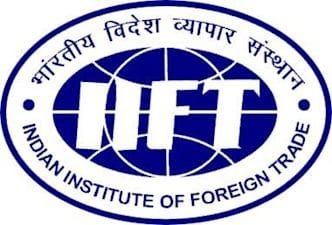Multiple headwinds, cautions ICRA
The performance of India Inc continued to weaken under multiple headwinds during Q3 FY2020, said ICRA Ltd on 6 Feb 2020.
Revenue growth slowed down to the lowest in more than sixteen quarters, owing to continued weakness in consumer sentiments, benign commodity prices and general slowdown in the economy.
ICRA’s analysis of Q3 FY2020 financial results of listed companies in the Indian Corporate Sector (excluding financial sector entities) showed aggregate revenues contracting by 0.1% on a Y-o-Y basis. The major impact on revenues came from commodity-linked sectors, revenues from which contracted by 4% on a Y-o-Y basis.
Consumer sentiment too continued to remain muted, as reflected in slowing down in revenue growth or contraction in revenues reported in most consumer-oriented sectors, which contracted by 0.3% during the quarter on a Y-o-Y basis.
Adjusted for revenues from aviation sector (which grew in double-digits during the quarter on the back of capacity additions and better pricing environment), revenues from consumer-oriented sectors further contracted by 1.5% during the quarter on a Y-o-Y basis.
Commenting further, Shamsher Dewan, ICRA Vice President – Corporate Sector Ratings, said, “Continuing the trend since the beginning of the fiscal, the financial performance of the Indian Corporate sector in Q3 FY2020 was characterised by weakness in consumer and commodity-linked sectors.
“With subdued urban as well as rural demand sentiments, and consumer confidence levels dipping low, several consumer-linked sectors exhibited continued weakness. Despite the seasonally strong festive period, automobiles sales contracted by double-digits, while FMCG volumes failed to offer impetus.
“Additionally, tepid realisations driven by benign commodity prices, coupled with subdued volumes in light of the macroeconomic slowdown, resulted in revenue contraction for all major commodity sectors, including oil & gas entities, metals & mining and iron & steel.”
In the infrastructure and construction segments, entities with international exposure were able to offset the slowdown in project execution in the domestic market.
Nevertheless, pace of execution of infrastructure projects remained weak, with slow release of funds from the government, harsh winters impacting execution, cancellation of orders and muted growth in order inflows due to deferrals in awarding new contracts.
In terms of sector specific trends, consumer-linked sectors like automobiles continued to report Y-o-Y weakening. Although the festive period is seasonally the strongest period for consumer-oriented sectors, subdued demand sentiment this year continued to play spoilsport.
Within the automobile sector in particular, the double whammy of subdued retail sales and high dealership inventory acted as major dampeners, and wholesale dispatches from OEMs to dealerships continued to contract, although the deceleration pace softened on a sequential basis.
Nevertheless, demand sentiment continues to be soft, with increasing ownership costs, weak macroeconomic environment and challenging financing availability remaining major dampeners. Consequently, retail sales of Passenger Vehicles remained largely flat during the quarter, while that of Two-Wheelers contracted by 3%, despite festive-led sales push and discounts being at historic highs.
Tractor sales (wholesale dispatches) also contracted by 6% during the quarter, especially hurt by the subdued rural demand sentiment. Going forward, budgetary announcements to revive rural demand and improve disposable income would remain key towards the sector revival.
The weak consumer sentiment also had an impact on the Media sector, where subdued ad-spends, especially by the automotive and FMCG sectors, and the Government, resulted in Y-o-Y revenue contraction of 4%.
Aviation industry was the only saving grace among consumer-oriented sectors, wherein revenues expanded in strong double-digits, driven by capacity additions undertaken by select airlines. With growing passenger traffic (8% during Oct-Nov 2019) and pricing power improving, the sector reported healthy growth during the quarter.
Cement production also declined during the quarter by 2% (compared to 13% growth in FY2019), given continued slowdown in infrastructure, housing and industrial/commercial sectors due to slow release of funds, construction ban in select markets and cancellation of some orders.
Steel production also contracted by 6% on a Y-o-Y basis and 5% sequentially, hurt by subdued demand from both infrastructure and automotive sectors. Subdued volumes, coupled with benign realisations, resulted in revenues from commodity sectors like Cement, Oil & Gas, Iron & Steel and Metals & Mining contracting by 4% during the quarter, thereby pressurising overall growth of India Inc.
Among other sectors, the IT sector offered impetus to growth, with revenue growth of 8% in Q3 FY2020 (in Rs terms) supported by inorganic growth, rupee depreciation on a Y-o-Y basis and traction in digital offerings across verticals. Nevertheless, the growth has slowed down significantly from the double-digit levels (16% in FY2019), largely because of deceleration in the BFSI sector globally. Additionally, sectors like fertilisers and pharmaceuticals helped offset the impact of slowdown in commodity and consumer-oriented sectors.
“Going forward, revival in corporate sectors performance will be dependent on an improvement in consumer sentiments and a pick-up in infrastructure investments which would support demand in the commodity sectors,” said Dewan.
“In light of the same, the recent budgetary announcements towards improving rural sentiment and infrastructure investments, as well as improving disposable incomes, are expected to offer impetus to Corporate India,” he expected.
During Q3 FY2020, the profitability of India Inc. improved to some extent on a Y-o-Y as well as sequential basis, supported by cost-control initiatives undertaken by companies in the challenging demand environment, coupled with commodity tailwinds.
Nevertheless, it continues to be weighed down by the subdued demand, high discounting, tepid realizations in commodity sectors, and negative operating leverage. This was visible in the PBT margins, which remained largely flat on a Y-o-Y basis at 9.4%.
Among various sectors, profitability of the iron & steel sector weakened on a Y-o-Y basis due to subdued demand, tepid realisations and negative operating leverage, while that of the IT sector benefited from currency benefit, cost optimisation and higher off-shoring. Profitability of aviation and media sectors also benefited from easing of cost pressures, while continued focus on cost-controls in a challenging demand environment aided the FMCG sector.
The interest coverage ratio of ICRA’s sample, adjusted for sectors with relatively low debt levels (IT, FMCG and Pharma) witnessed a Y-o-Y weakening and sequential improvement to 3.9x from 3.5x in Q2 FY2020 and 4.1x in Q3 FY2019. On a Y-o-Y basis, the interest coverage was impacted by the double whammy of rising interest costs in a weakening profit environment.
Interest costs increased by a sharp 15% on Y-o-Y basis on account of a) higher interest rates, b) increase in debt levels and c) Ind AS 116 adjustments, on account of which lease rentals have been bifurcated into interest and depreciation costs.
Sectors like aviation, oil & gas and construction saw significant increase in interest costs on a Y-o-Y basis on account of the same. Stressed sectors like Iron & Steel, Construction, Power and Telecom reported further Y-o-Y weakening of interest cover during the quarter. fiinews.com











